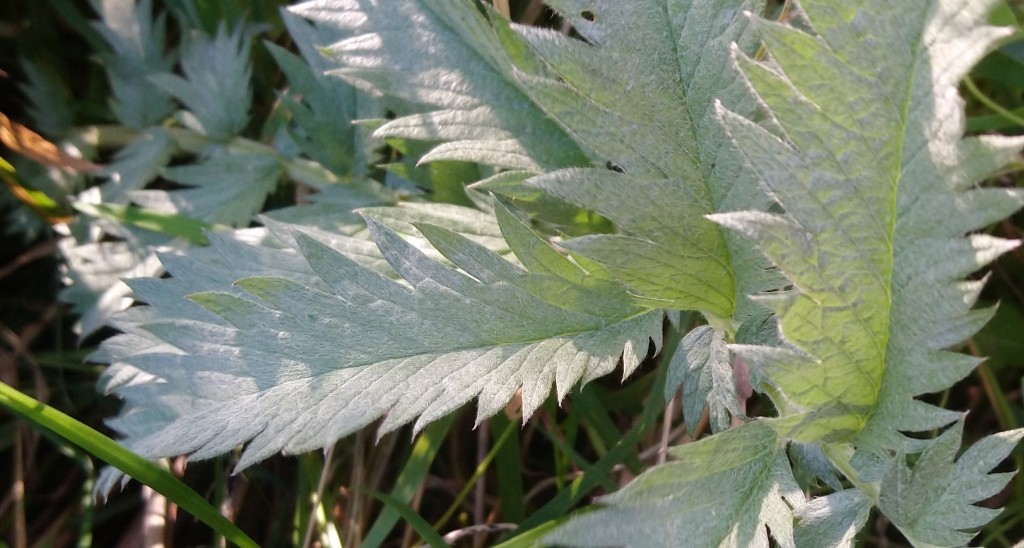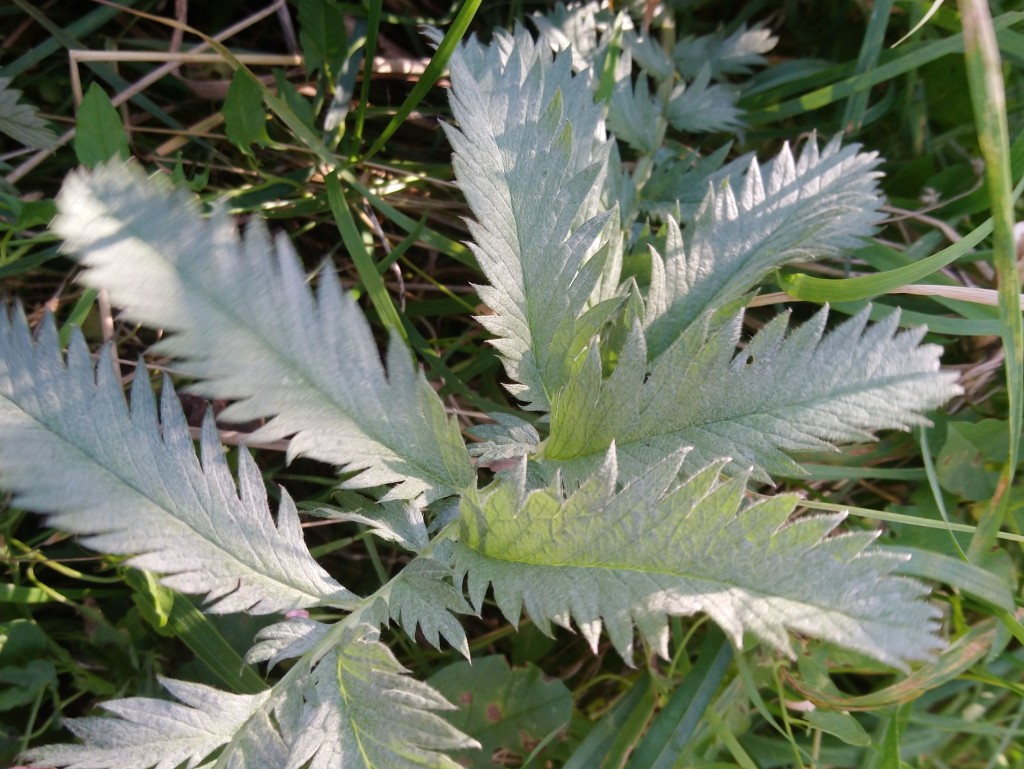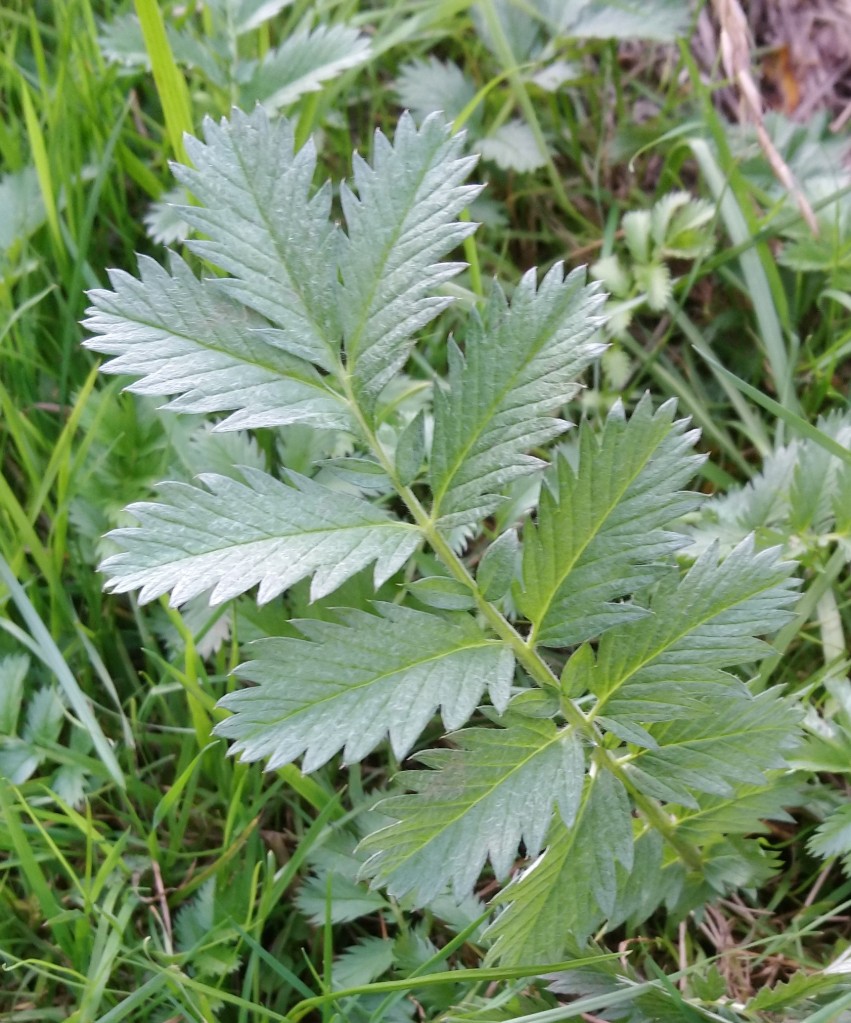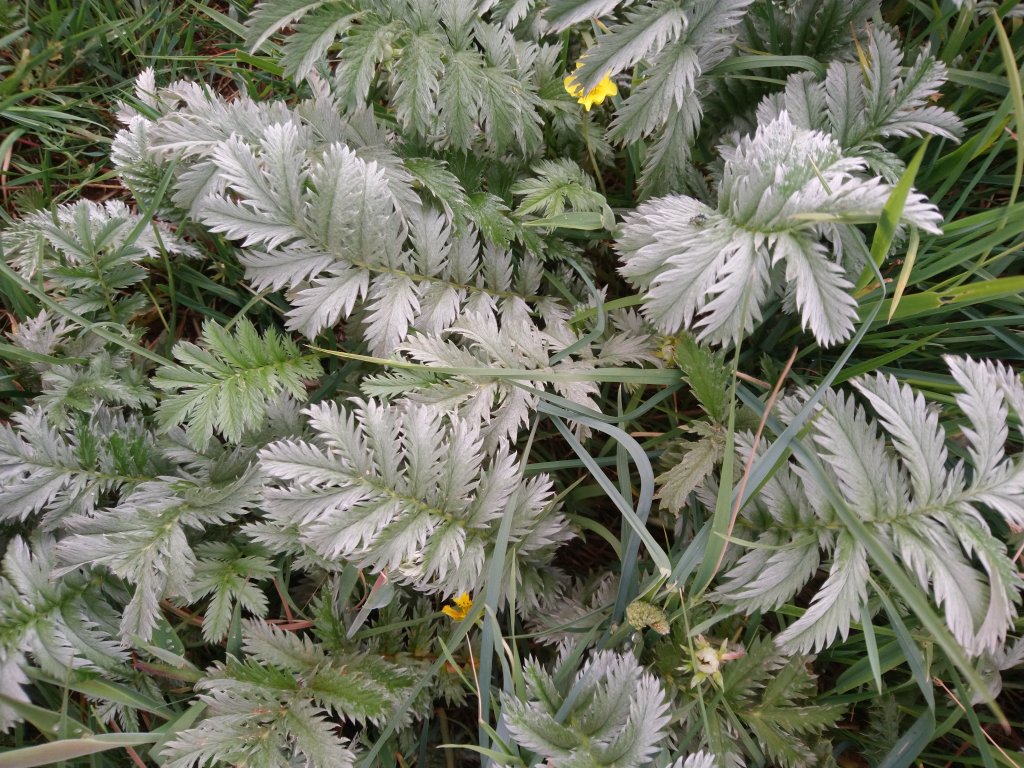
[037] Argentina anserina, Silverweed
Introduction
Argentina anserina, Silverweed, widespread throughout the Northern hemisphere is a low, ground-covering perennial plant with attractive leaves, silvery looking on one side. It is, of course, known formally as Common Silverweed, also known as silver cinquefoil. (There are three other silverweeds in Anserina.)
Taxonomy
Kingdom – Plants
Division – Vascular Plants
Class – Angiosperms (Flowering Plants)
Order – Rosales
Family – Rosaceae
Genus – Agentina
Scientific Name – Argentina anserina
It was originally known as Potentilla anserina and its removal from Potentilla is controversial.
Name
The genus Argentina (and the country) gets its name from the Spanish for silver.
As you will remember from [026] Greylag, anser is Latin for goose. Its name in Swedish is gåsört (goose-wort) perhaps because it was used to feed geese, or because the leaves were reminiscent of a goose’s feet. [Remember, of course, that Linnaeus was Swedish.]
Description
It is very closely related to Potentilla, often called cinquefoils, and is similar in appearance. It is a low-growing, creeping plant with saw-toothed leaves.

The leaves are covered in tiny hairs, especially on the underside. These hairs give it a silvery look.




I had not noticed its flowers but if you zoom into the last picture you can see two yellow flowers hiding behind the leaves. They have five petals like typical cinquefoils. (That is, of course, what ‘cinque-foil’ means.)


Habitat and use
Silverweed is native to most of the Northern Hemisphere and can spread rapidly. Its roots can be used as a food crop, similar to parsnips.
Its ability to spread can make it a garden weed.

